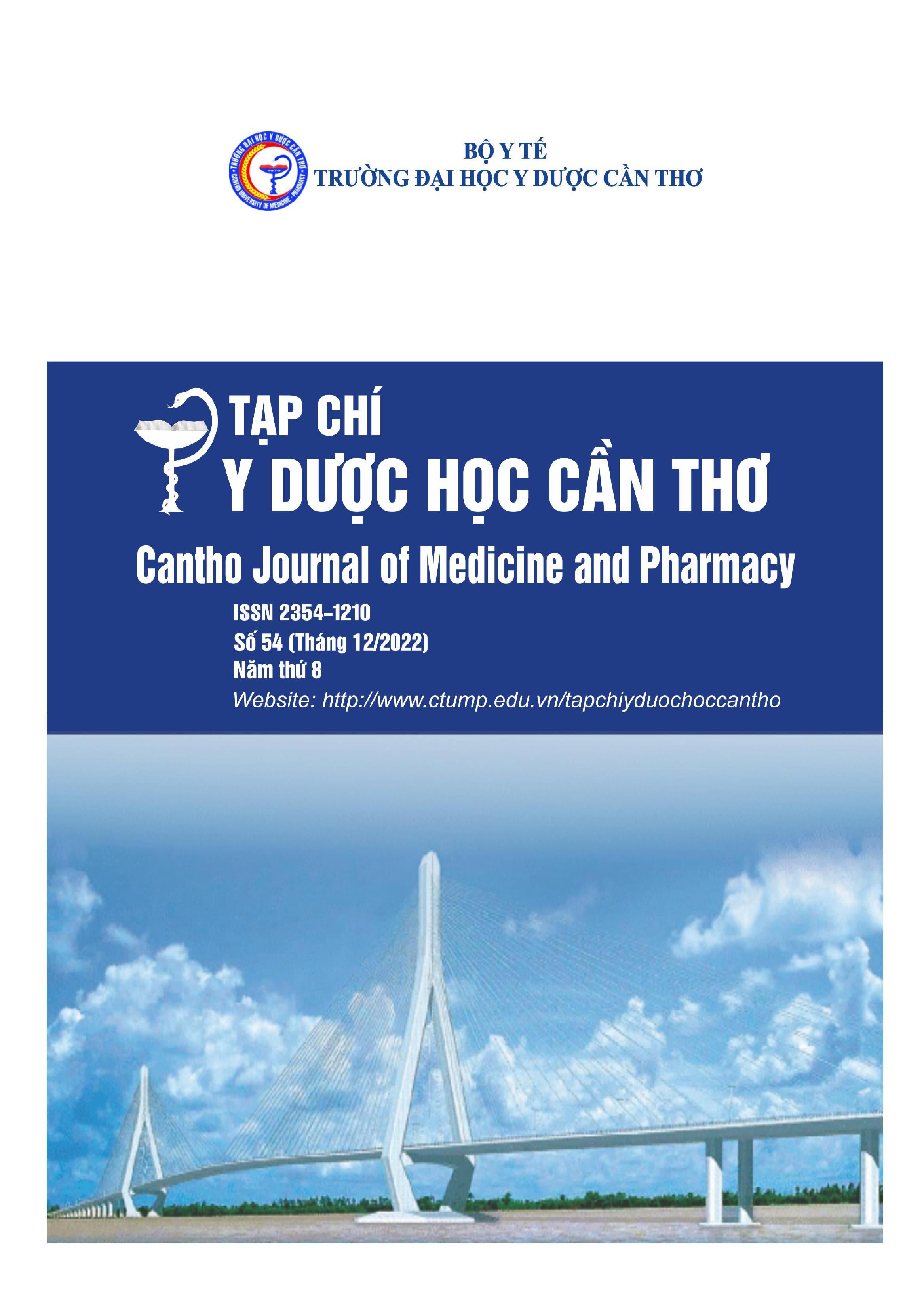INVESTIGATION OF EXTRACTION, AND DETERMINATION POLYPHENOL CONTENT OF DRIED BITTER MELON FRUIT FORMULATION (MOMORDICA CHARANTIA L.)
Main Article Content
Abstract
Background: Bitter melon fruit (Momordica charantia L.) is used popularly in Vietnam with many uses related to human health. Therefore, we investigated the extraction and formulation of dried extract from bitter melon fruit. Objectives: To determine extraction, and preparation conditions of dried bitter melon fruit and determine polyphenol content of dried bitter melon fruit. Materials and methods: Bitter melon fruit was collected in Can Tho city using the water bath method with survey factors such as type of solvent (water, ethanol 70%, ethanol 80%, ethanol 96%), temperature (50oC, 60oC, 70oC, 80oC), the treated herbs to the solvent ratio (1:5, 1:7, 1:10, 1:20), time (30 min, 45 min, 60 min, 90 min), number of extractions (1, 2, 3); type of excipient (avicel, magnesium oxide, calcium carbonate, lactose, mannitol) and condensed extract to excipient ratio (1:4, 1:5, 1:6, 1:7, 1:8, 1:9). Results: The extraction conditions were determined with aqueous solvent at the temperature of 50 oC, the treated herbs to solvent ratio were 1:20 for 90 minutes, 3 times of extraction. The excipient selected for the formulation of the dried extract is mannitol and the condensed extract to excipient ratio is 1:7. Conclusion: Dried bitter melon fruit extract has been prepared with a moisture content of 1.70% and 1 g of the dried extract is equivalent to 3.8146 mg of GAE.
Article Details
Keywords
Bitter melon, Momordica charantia L., dried extract, extraction
References
2. Đỗ Huy Bích (2012), Cây thuốc và động vật làm thuốc ở Việt Nam tập 1, Nhà xuất bản Y Học, tr. 335-341.
3. Bộ y tế (2017), Dược điển Việt Nam V tập II, Nhà xuất bản Y Học, tr. 1257-1258.
4. Võ Văn Chi (2012), Từ điển cây thuốc Việt Nam tập 1, Nhà xuất bản Y Học.
5. Nguyễn Khoa Hạ Mai (2014), Tổng hàm lượng polyphenol của một số cây thuốc An Giang. Tạp chí Phát triển Khoa học và Công nghệ, tập 17, số 2, trang 5-9.
6. Trương Quốc Tất và cộng sự (2021), Ảnh hưởng của nhiệt độ sấy đến hàm lượng hợp chất polyphenol, sắc tố carotenoids, chlorophyll và hoạt tính chống oxy hóa của cây rau càng cua (Peperomia pellucida L.) thu ở tỉnh Tiền Giang. HCMCOUJS-Kỹ thuật và Công nghệ, tập 16, số 1, trang 25-33.
7. Ngô Thu Thảo và cộng sự (2021), Xác định hàm lượng polyphenol, flavonoid và hoạt tính kháng oxy hóa của cao chiết từ lá chanh (chi Cam chanh - citrus). Tạp chí Nghiên cứu khoa học và Phát triển kinh tế Trường Đại học Tây Đô, tập 12, trang 238-251.
8. Ngô Văn Thu (2004), Bài giảng dược liệu tập I, Trường đại học Dược Hà Nội, Nhà xuất bản Hà Nội, tr. 136.
9. Đinh Hồ Thiện Tín, (2016), Nghiên cứu bào chế và đánh giá độ hòa tan của viên nang được bào chế từ cao chiết vỏ bưởi và Khổ qua. Đề tài nghiên cứu khoa học cấp trường, Đại học Y Dược Cần Thơ.
10. Nguyễn Thị Ngọc Trâm (2017), Nghiên cứu thành phần flavonoid cây Nhân trần tía (Adenosma bracteosum Bonati-Scrophulariacea), Luận văn tốt nghiệp đại học, Đại học Y Dược Cần Thơ.
11. Nguyễn Thị Linh Tuyền (2016), Nghiên cứu bào chế cao khô rễ củ Sinh địa (Rehmannia glutinosa Libosch., Scrophulariaceae) bằng phương pháp sấy phun. Tạp chí Y Dược học Cần Thơ, số 5, trang 157-163.
12. Nguyễn Trọng Tường (2020), Xác định hàm lượng polyphenol, flavonoid và hoạt tính kháng oxy hóa của cao chiết từ Vạn thọ (Tagetes erecta L.) Hoa vàng và hoa cam. Tạp chí Nghiên cứu khoa học và Phát triển kinh tế Trường Đại học Tây Đô, số 8 -2020.
13. Jia S et al (2017), Recent Advances in Momordica charantia: Functional Components and Biological Activities. IJMS, volume 18, No 12, pp. 2555.
14. Lopes, A.P., Galuch, M.B., Petenuci, M.E. et al (2020), Quantification of phenolic compounds in ripe and unripe bitter melons (Momordica charantia) and evaluation of the distribution of phenolic compounds in different parts of the fruit by UPLC–MS/MS. Chemical Papers, volume74, pp. 2613–2625.


